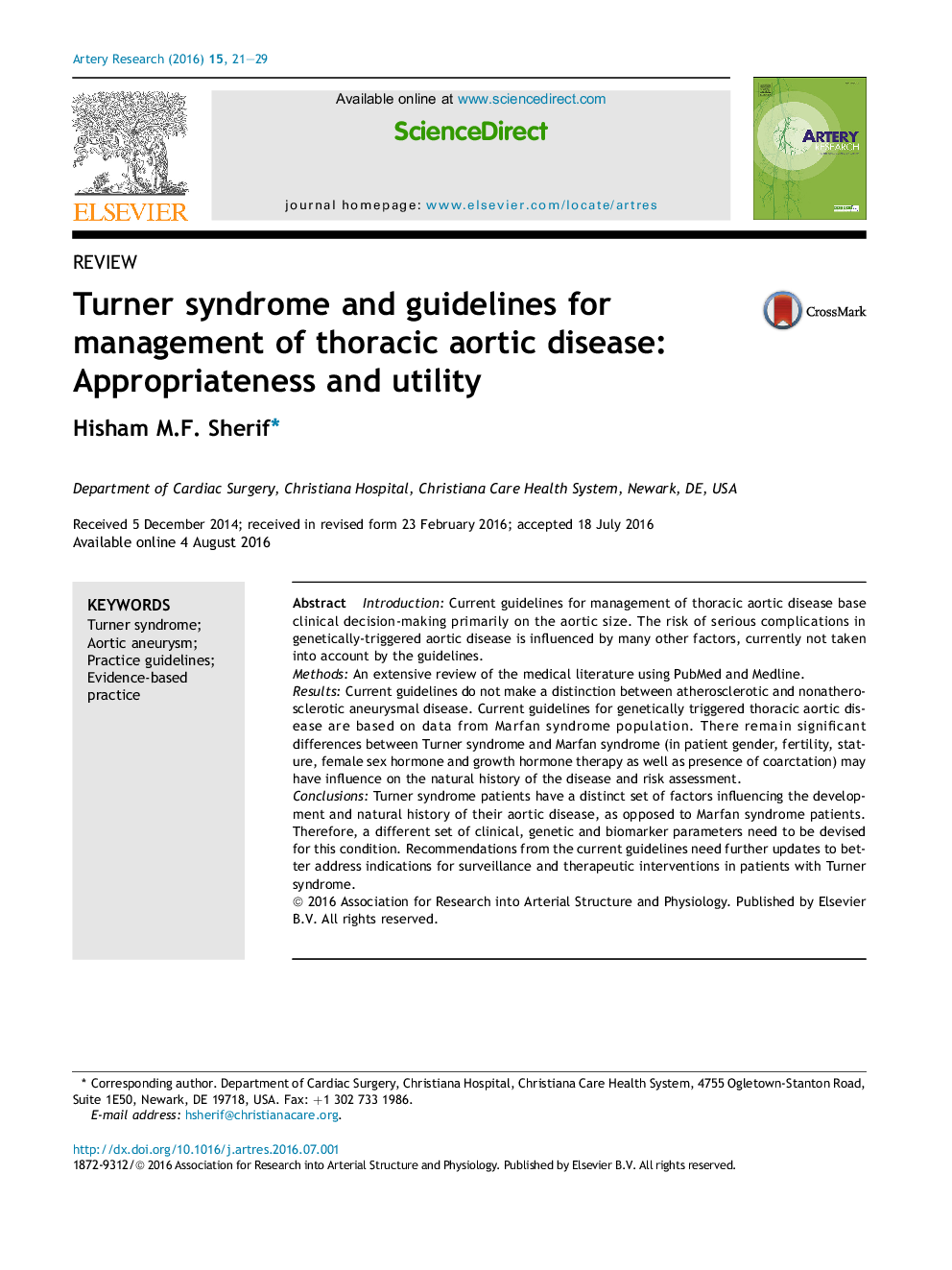| Article ID | Journal | Published Year | Pages | File Type |
|---|---|---|---|---|
| 2891353 | Artery Research | 2016 | 9 Pages |
•Turner syndrome should not be considered a ‘connective tissue disease’.•Current evidence does not support a higher risk of aortic dissection in Turner syndrome.•Management guidelines for thoracic aortic disease may need to be revised in light of current evidence.
IntroductionCurrent guidelines for management of thoracic aortic disease base clinical decision-making primarily on the aortic size. The risk of serious complications in genetically-triggered aortic disease is influenced by many other factors, currently not taken into account by the guidelines.MethodsAn extensive review of the medical literature using PubMed and Medline.ResultsCurrent guidelines do not make a distinction between atherosclerotic and nonatherosclerotic aneurysmal disease. Current guidelines for genetically triggered thoracic aortic disease are based on data from Marfan syndrome population. There remain significant differences between Turner syndrome and Marfan syndrome (in patient gender, fertility, stature, female sex hormone and growth hormone therapy as well as presence of coarctation) may have influence on the natural history of the disease and risk assessment.ConclusionsTurner syndrome patients have a distinct set of factors influencing the development and natural history of their aortic disease, as opposed to Marfan syndrome patients. Therefore, a different set of clinical, genetic and biomarker parameters need to be devised for this condition. Recommendations from the current guidelines need further updates to better address indications for surveillance and therapeutic interventions in patients with Turner syndrome.
